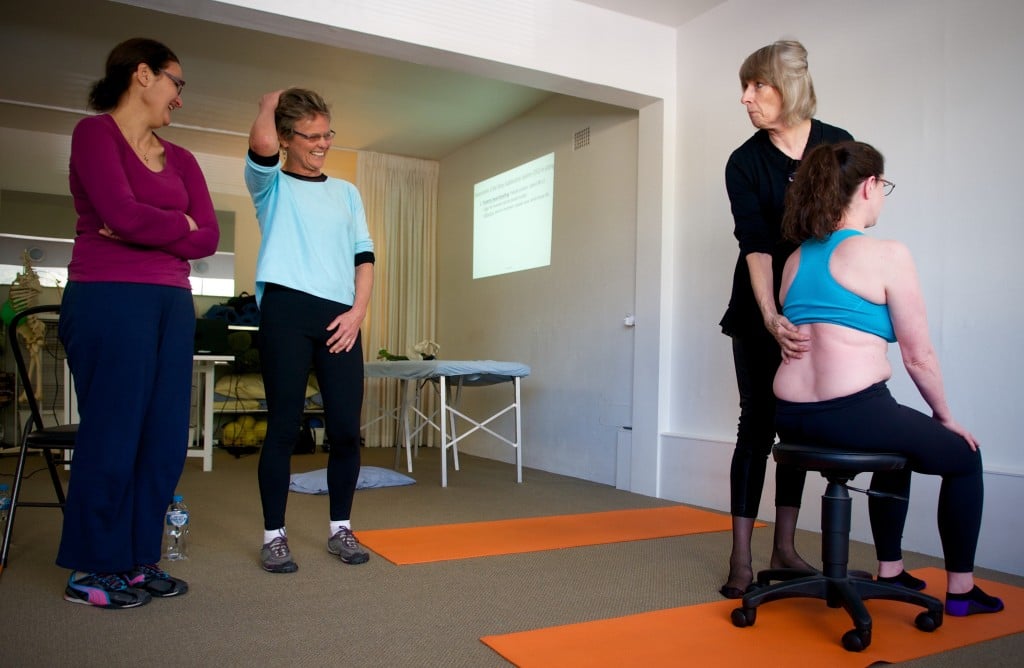The spine is an integrated movement system, changes in one part of the spine affect the rest of the spine.
The spine consists of four physiological curves that determine the functionality of the spine and myo-fascial system – two lordosis in the lumbar and cervical spine and two kyphosis in the thorax and sacrum. The development of the lumbar lordosis is the most critical of the curves to develop, but is the last of the curves to unravel from the flexed foetal position. Lack of control of the lumbar lordosis leads to hyper-flexion of the sacrum, causing collapse of the entire spine and resultant ‘C’ curve or slumped position – so common in our clients. Observing a client’s postural habits during the subjective examination provides a plethora of information about the underlying cause of the client’s issues, before any other form of examination is required. Just through observation we can determine if the person’s deep inner unit or ‘core’ is switched off and therefore what needs to be the focus of our treatment approach.
Hodges research helped us to understand that when the postural system collapsed, activation of the deep inner unit also switched off. Likewise when we initiate movement from the pelvis, driving the sacrum into first fundamental pattern or slight anterior pelvic tilt (a neutral pelvic position) the body automatically initiates the deep inner unit or ‘core’.

First fundamental pattern of the pelvis is critical to enable the spine to ‘stack’ itself up against gravity. The problem for many clients is that they are so stiff and tight that they are unable to establish first fundamental pattern of the pelvis. In an effort to establish ‘neutral’ they compensate by over activating the erector spinae around the thoracic lumbar junction to literally pull themselves into a more upright position, resulting in exacerbation of their pain experience.
As clinicians this is what we have to be careful to observe, correct and help mobilise the stiff and tight areas to enable freedom of movement. Neutral spine should be effortless, but without freeing up the restrictions in the body, usually around the pelvis and hips, thorax and shoulder girdle, the client is stuck ‘trying’ to achieve good posture without the inner capacity to do so – and therefore exacerbate their symptoms.